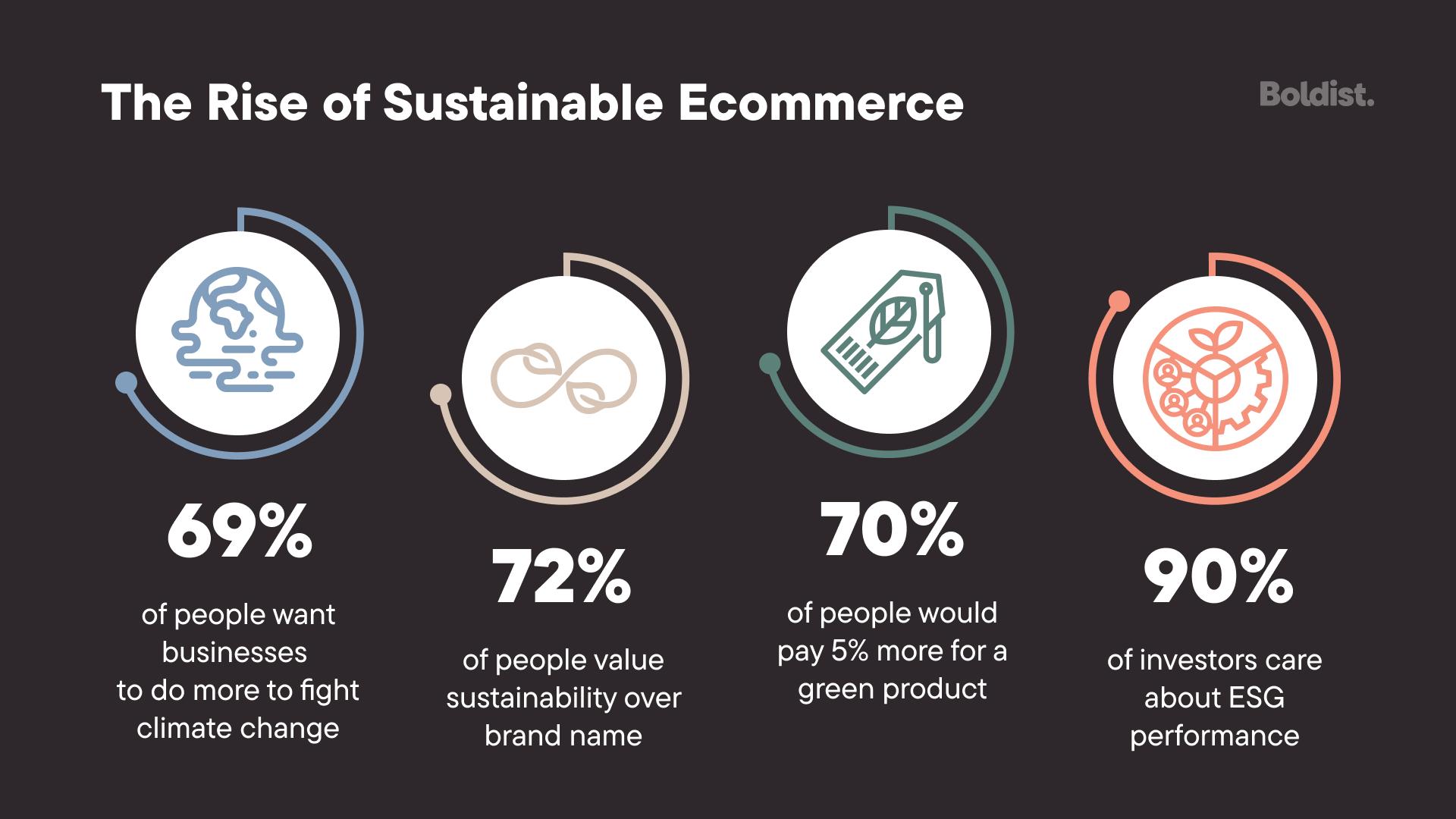The Future of Ecommerce: 13 Trends That Will Transform Online Shopping
Hey there, online shopping enthusiasts! If you’ve ever scrolled through an endless array of products, clicked through various tabs to compare prices, or wrestled with the frustration of a slow checkout process, you’re not alone. The world of ecommerce is constantly evolving, and it’s more exciting then ever! As we leap into a future filled with innovation and technology, it’s essential to stay ahead of the curve.
In this article, we’re diving into 13 game-changing trends that are set to redefine how we shop online. From the rise of artificial intelligence and personalized experiences to the growing emphasis on sustainability and ethical purchasing, these shifts are not just buzzwords—they represent a profound transformation in the way we engage with brands and make purchasing decisions. So, weather you’re a seasoned online shopper, a budding entrepreneur, or simply curious about what’s next in ecommerce, buckle up! You’re about to discover how these trends will shape the future of online shopping and why you should be paying attention. Let’s explore the exciting possibilities awaiting us in the digital marketplace!
Exploring the Rise of Personalization in Online Shopping
The world of online shopping is undergoing a transformation, and at the heart of this evolution is the concept of personalization. As consumers increasingly seek tailored experiences, brands are stepping up their game to deliver what customers want—when they want it, how they want it. This shift is not just a trend; it’s becoming a necessity for businesses aiming to thrive in an increasingly competitive market.
Personalization in ecommerce involves utilizing data and technology to create a shopping experiance that feels uniquely curated for each individual. This means analyzing user behavior, preferences, and past purchases to recommend products that are most likely to resonate with the shopper.The result? Higher conversion rates,boosted customer loyalty,and an enhanced shopping experience.
Some key strategies that businesses are employing include:
- Dynamic Content: Websites are now able to change their content based on the user’s previous interactions. This could mean showcasing specific products or even altering promotional banners to reflect the shopper’s interests.
- Personalized Emails: gone are the days of generic email blasts.Smart brands are sending tailored recommendations and offers based on what customers have previously shown interest in,significantly increasing open and click-through rates.
- AI-Driven Recommendations: Artificial intelligence plays a vital role in analyzing vast amounts of data to predict what a user might want next, offering suggestions that feel almost intuitive.
moreover, the implementation of chatbots and virtual shopping assistants is making personalized shopping more accessible. These AI tools can engage with customers in real-time, providing tailored advice and recommendations based on individual preferences and queries. It enhances customer service while giving shoppers a sense of connection and care from the brand.
| Personalization Tactics | Benefits |
|---|---|
| Dynamic Content | Increases engagement and relevancy |
| Personalized Emails | Improves customer retention rates |
| AI-Driven Recommendations | Enhances shopping convenience |
| Chatbots | Provides instant support and suggestions |
As personalization continues to shape the landscape of online shopping, businesses that invest in these technologies will likely see notable advantages. Customers appreciate brands that understand their needs and preferences, and this connection fosters long-term loyalty. in a nutshell, the future of ecommerce is not just about selling products; it’s about creating experiences that resonate on a personal level, making shopping not just an activity, but a delightful journey.
The Role of Artificial Intelligence in Enhancing Customer Experience
Artificial Intelligence (AI) is quickly becoming an indispensable tool in the arsenal of online retailers, driving innovation and elevating customer experience to unprecedented levels. Through sophisticated algorithms and data analysis, AI can anticipate customer needs, tailor shopping experiences, and ultimately foster deeper customer loyalty.
One of the most significant impacts of AI on eCommerce is its ability to personalize shopping experiences. By analyzing customer behavior, preferences, and purchase history, AI can create highly customized product recommendations. This level of personalization not only makes shopping more enjoyable but also increases conversion rates. Imagine a shopper logging into an eCommerce site and instantly seeing products curated just for them—this is not science fiction; it’s the power of AI.
In addition to personalization, AI-driven chatbots and virtual assistants are transforming customer service. These smart systems are available 24/7, providing immediate responses to inquiries and guiding customers through their shopping journey. Their ability to understand natural language means that customers can receive assistance without having to navigate complex menus. This immediate support not only enhances the customer experience but also frees up human agents to handle more complex issues.
Furthermore, AI can optimize inventory management by analyzing trends and predicting demand. This proactive approach ensures that popular items are always in stock, reducing the risk of lost sales due to out-of-stock situations. As an example, a retailer can utilize AI to forecast seasonal demand spikes, ensuring they meet customer expectations and maintain satisfaction.
Another fascinating request of AI is its role in enhancing the visual search capability. Advanced image recognition technology allows customers to upload images and find similar products online. This not only streamlines the shopping process but also engages customers in a more interactive way. As visual search becomes more prevalent, retailers can expect an increase in sales from customers who prefer to shop using images rather than text.
While the benefits of implementing AI in eCommerce are clear, it is crucial for retailers to understand the ethical considerations that come with it. Transparency in data usage and respectful handling of customer data will be essential in building trust. As consumers become increasingly aware of data privacy issues, businesses that prioritize ethical AI practices will likely stand out from their competitors.
To summarize, the integration of AI in online shopping is not just a trend; it’s a game-changer. By enhancing personalization, streamlining customer service, optimizing inventory, enabling visual search, and adhering to ethical standards, retailers can create a robust customer experience that not only meets but exceeds consumer expectations. In the ever-evolving landscape of eCommerce, those who harness the power of AI will undoubtedly thrive.

How Augmented Reality is Changing the Way We Shop Online
Augmented Reality (AR) is revolutionizing the online shopping landscape, bridging the gap between the virtual and physical worlds. by overlaying digital information onto real-world environments, AR provides consumers with an interactive shopping experience that was previously unimaginable. Imagine trying on clothes,placing furniture in your living room,or even testing out makeup shades without ever leaving your home. This is not just a trend; it’s a game-changer for eCommerce.
One of the most significant advantages of AR is its ability to enhance product visualization. Shoppers can see how products fit into their lives before making a purchase, which can lead to higher confidence in buying decisions.This capability helps reduce the uncertainty that often comes with online shopping, where customers cannot physically interact with items. With AR, they can:
- Visualize how a piece of furniture looks in their home
- Try on clothes or accessories virtually
- Experience products in a 3D environment
Additionally, AR facilitates a more engaging shopping experience. Retailers can create immersive environments that captivate customers’ attention. As a notable example, interactive AR features can turn a simple product listing into a virtual experience.By allowing users to engage directly with products, retailers can enhance brand loyalty and increase time spent on their websites. this interactive nature of AR often translates to higher conversion rates as consumers feel more connected to what they are purchasing.
Moreover, the integration of AR into mobile shopping apps is paving the way for “try-before-you-buy” experiences. For example, beauty brands are using AR to allow customers to see how different makeup products will look on their skin tones. This not only personalizes the shopping experience but also minimizes the likelihood of returns, which is a prevalent issue in online shopping. With AR, customers can make informed choices, leading to more satisfaction and less waste.
As AR technology continues to evolve, we can expect even more innovative applications in the online shopping realm. Retailers are increasingly investing in AR capabilities, aiming to offer seamless experiences that blend entertainment with purchasing. As this technology matures, it promises to become an indispensable tool for eCommerce businesses looking to stand out in a crowded marketplace.
| AR Benefits | Impact on Shopping |
|---|---|
| Enhanced Visualization | Reduces uncertainty and increases confidence in purchases |
| Engaging Experiences | Captivates attention, leading to prolonged visits and higher sales |
| Try-Before-You-Buy | Minimizes returns and boosts satisfaction |
Ultimately, the fusion of augmented reality with online shopping is not just about technological advancement; it’s about creating a more fulfilling shopping experience. as consumers become more accustomed to interactive technologies,those eCommerce platforms that embrace AR will likely lead the charge into the future of retail.

Understanding the Growing Importance of Sustainability in E-commerce
The rise of e-commerce has transformed the way consumers shop, but it has also brought to the forefront the critical issue of sustainability.As more people turn to online shopping, the environmental impact of packaging, shipping, and product sourcing is becoming increasingly significant. Shoppers are not just looking for convenience anymore; they are also concerned about the ecological footprints of the brands they support.
Embracing eco-kind practices in e-commerce is no longer a niche trend; it’s becoming a mainstream expectation. Brands that prioritize sustainability are building stronger connections with their customers. By adopting practices such as using biodegradable packaging, offering carbon-neutral shipping options, and ensuring ethical sourcing, companies can not only reduce their environmental impact but also enhance their brand loyalty and reputation.
According to recent studies, a staggering 66% of consumers are willing to pay more for enduring products. This shift in consumer behavior means that businesses must rethink their operational strategies. Here are some ways e-commerce companies are integrating sustainability:
- Sustainable packaging solutions: Transitioning to recyclable or compostable materials.
- Energy-efficient logistics: Utilizing renewable energy sources in warehouses and during transportation.
- Local sourcing: Reducing transportation emissions by sourcing products closer to consumers.
Moreover, the rise of circular economy principles—where products are designed for reuse, repair, and recycling—presents an exciting possibility for e-commerce. Brands that encourage consumers to return used products for recycling or refurbishing not only minimize waste but also foster a community of eco-conscious shoppers. This reciprocation cultivates a long-lasting relationship between consumers and brands,making it an appealing prospect for e-commerce businesses.
As sustainability becomes a key differentiator in the marketplace, companies are also leveraging technology to enhance their green initiatives. Artificial Intelligence (AI) and big data analytics can help in optimizing supply chains to reduce waste and improve efficiency.Here’s how technology is playing a role:
| Technology | Impact on sustainability |
|---|---|
| AI Algorithms | Optimize inventory management, reducing overproduction. |
| Blockchain | Enhances transparency in supply chains, ensuring ethical sourcing. |
| Eco-friendly delivery systems | Promote electric or hybrid vehicles for last-mile delivery. |
as shoppers become more environmentally conscious, e-commerce brands must adapt to meet these changing expectations. By prioritizing sustainability, companies not only contribute to the health of the planet but also position themselves as leaders in a rapidly evolving market. Embracing these practices will not only attract a loyal customer base but also ensure long-term success in the competitive world of online shopping.

Embracing Social Commerce: The New Frontier for Online Retailers
The shift Towards Voice shopping: Preparing for a hands-Free Future
The rise of voice assistants like Amazon’s Alexa, Google Assistant, and Apple’s Siri is reshaping the landscape of online shopping. Consumers are increasingly turning to their voices for convenience, making voice shopping not just a novelty but a necessity in today’s fast-paced world. With voice search accounting for over 20% of all searches,it’s crucial for brands to adapt their strategies. To stay ahead, consider the following elements in your approach:
- optimization for Voice Search: Unlike traditional search queries, voice searches tend to be more conversational. This shift means retailers need to optimize their product descriptions and website content for natural language. Think about how customers might phrase their inquiries and tailor your content accordingly.
- Simple Checkout Processes: voice shopping should mirror the simplicity of voice commands. Implementing streamlined checkout processes ensures a frictionless experience. Customers should be able to make purchases quickly with minimal voice commands.
- Personalization: leveraging AI to personalize shopping experiences can increase customer satisfaction. By analyzing past purchases and preferences, you can offer tailored recommendations, making the shopping experience more engaging.
- Multichannel Integration: Ensure that your voice shopping solution integrates smoothly with othre sales channels. Whether customers are shopping through your app, website, or voice platform, a consistent experience is essential for building trust and loyalty.
As we move towards a hands-free future, brands must also consider the implications of voice shopping on customer service. Providing immediate assistance via voice-activated FAQs or live chat can enhance user experience. Customers appreciate quick responses, and integrating these features into your voice platform can set you apart from competitors.
| Voice Shopping Benefits | potential Challenges |
|---|---|
| Convenience and speed | Limited product discovery |
| Hands-free experience | Voice recognition errors |
| 24/7 accessibility | Security concerns |
Moreover, the integration of voice commerce with smart home devices is paving the way for more seamless shopping experiences. Imagine ordering groceries directly from your kitchen or purchasing a new outfit while you’re busy cooking—this level of convenience is rapidly becoming a reality.
embracing the shift towards voice shopping is no longer optional—it’s essential for staying competitive in the ecommerce landscape. By optimizing for voice, streamlining processes, and enhancing customer service, brands can prepare for a future where hands-free shopping becomes the norm. The time to act is now; ensure your business is ready to meet the demands of this evolving marketplace.

Navigating the Challenges of Omni-Channel retailing
In the fast-paced world of retail, creating a seamless shopping experience across multiple platforms is more important than ever. Omni-channel retailing is not just a trend; it’s a necessity. Consumers today expect to move effortlessly between online, mobile, and physical stores. This shift challenges retailers to rethink their strategies and embrace a holistic approach.
One of the primary challenges is ensuring that inventory management is synchronized across all channels.Customers can become frustrated when they see an item online, only to find it out of stock in-store or vice versa. Retailers can address this by:
- Implementing real-time inventory tracking: This allows customers to see accurate stock levels regardless of where they are shopping.
- Utilizing centralized databases: A single source of truth for inventory helps eliminate discrepancies.
- Offering in-store pickup: This drives foot traffic while ensuring customers receive their desired products promptly.
Another significant challenge is delivering a consistent brand experience across all channels.Disparate messaging can confuse consumers and erode brand loyalty. Retailers should focus on:
- Unified branding: Ensure that every touchpoint — from social media to emails to in-store displays — reflects the same identity.
- Personalized marketing: Use data analytics to tailor promotions and recommendations based on customer behavior across channels.
- Customer service integration: provide support that allows customers to transition seamlessly between channels, whether they’re using chatbots online or speaking to an associate in-store.
The rise of mobile shopping adds another layer of complexity. With more consumers using their smartphones for everything from product research to purchases, retailers must optimize their mobile platforms. Key strategies include:
- Responsive design: Ensure that websites are fully functional and visually appealing across different devices.
- Streamlined payment options: Integrate mobile wallets and one-click purchasing to speed up the transaction process.
- Enhanced user experience: Invest in user-friendly navigation and search functionalities that cater to mobile shoppers.
To better visualize the impact of omni-channel strategies on sales performance, consider the following table:
| Channel | Customer Engagement (%) | Sales Contribution (%) |
|---|---|---|
| Online Store | 45 | 60 |
| Mobile App | 30 | 25 |
| Physical Store | 25 | 15 |
As retailers navigate these challenges, they must remain agile and adapt quickly to changing consumer preferences. The future of shopping is undoubtedly omni-channel, and those who invest in a cohesive customer experience will stand out in an increasingly competitive landscape.

Cryptocurrency and Blockchain: The Future of Payments and Security
The rapid evolution of technology has birthed a new era in financial transactions, where cryptocurrency and blockchain technology are becoming increasingly integral to online commerce. These innovations promise to reshape the landscape of digital payments and enhance security for both merchants and consumers alike. with their decentralized nature, cryptocurrencies eliminate the need for traditional banks, allowing for faster transactions with lower fees. This evolution is not just a trend; it represents a significant shift towards greater financial autonomy for users.
One of the primary advantages of using cryptocurrencies in eCommerce is the immediate transaction processing. Unlike traditional payment methods that may take several days to settle, cryptocurrencies provide near-instantaneous transactions. This means that merchants can access their funds almost immediately, fostering better cash flow management. additionally,the global reach of cryptocurrencies allows businesses to easily transact with customers around the world without worrying about currency conversion rates or international banking fees.
Security is another crucial aspect where blockchain technology excels. Each transaction made with cryptocurrencies is recorded on a public ledger, making it nearly impossible to alter or counterfeit transactions. This transparency builds trust between consumers and retailers, knowing that their information is secure and immutable. As online shopping becomes more prevalent, ensuring secure transactions will be vital to protect against cyber threats.
- Decentralization: Reduces reliance on banks and financial institutions.
- Lower transaction fees: Cuts costs for both businesses and consumers.
- Enhanced security: Protects against fraud and hacking attempts.
- Global accessibility: opens new markets for eCommerce businesses.
Moreover, integrating cryptocurrencies into eCommerce platforms offers an opportunity to attract a new demographic of tech-savvy customers who prioritize digital currencies. As merchants start accepting cryptocurrencies,they position themselves at the forefront of innovation,enhancing their brand image as forward-thinking and adaptable. This can lead to increased customer loyalty, as shoppers feel more connected to businesses that embrace modern payment methods.
| Feature | Traditional Payments | Cryptocurrency payments |
|---|---|---|
| transaction Speed | 1-3 Days | Instant |
| Fees | High | Low |
| Security | Moderate | High |
| International Transactions | Complicated | Simple |
as eCommerce continues to expand,the adoption of cryptocurrencies and blockchain technology will play a pivotal role in shaping the future of payments and security. Businesses that embrace these changes not only enhance their operational efficiency but also foster a secure and engaging shopping experience for consumers. By staying ahead of this curve, retailers can ensure they remain competitive in an ever-evolving digital marketplace.
Subscription Models: Why They’re Here to Stay and How to Adapt
Subscription models have revolutionized the way consumers engage with products and services.Gone are the days of one-time purchases; today’s shoppers are more inclined to sign up for ongoing services that provide consistent value. This trend isn’t just a fleeting phenomenon; it’s a fundamental shift in consumer behavior, making subscription-based offerings a staple in various industries.
Why are subscription models here to stay? For one,they simplify the buying process. Customers appreciate the convenience of automatic deliveries and predictable billing cycles.Additionally,businesses benefit from:
- Steady Revenue Streams: Subscriptions create a reliable income flow,allowing businesses to forecast earnings more accurately.
- Customer Loyalty: Ongoing relationships are fostered, increasing brand loyalty and reducing churn.
- Personalization: Data collected through subscriptions allows businesses to tailor offerings to individual preferences, enhancing the customer experience.
To effectively adapt to this changing landscape, businesses must consider several key strategies:
- Understand Your Audience: Know who your customers are and what they value most.Tailoring your subscription service to meet their needs will increase retention.
- Flexible Options: Offer various subscription tiers or packages that cater to different budgets and requirements, ensuring there’s something for everyone.
- Engaging Content: Deliver content that adds value, whether it’s exclusive access to products, educational resources, or community engagement opportunities.
To illustrate the impact of subscription models, let’s look at a comparison of businesses that have implemented them versus those that haven’t:
| Business Type | with Subscription Model | Without Subscription Model |
|---|---|---|
| Revenue stability | High | Variable |
| Customer Retention | 75%+ | 30%+ |
| Personalization | Advanced | Limited |
By leveraging the strengths of subscription models, businesses can not only enhance customer satisfaction but also position themselves for sustainable growth in a competitive online marketplace. The future of eCommerce is leaning towards this model, making it imperative for brands to innovate and evolve.

The Impact of Fast Delivery Expectations on E-commerce strategies
The rise of fast delivery expectations has fundamentally transformed the e-commerce landscape, pushing businesses to rethink their logistics and operational strategies. Today’s consumers are not just looking for quality products; they want them delivered within hours, if not minutes. This shift is compelling retailers to innovate and adapt at an unprecedented pace.
To meet these demands, companies are implementing advanced logistics solutions. With the integration of AI and machine learning, retailers can analyze delivery routes in real-time, optimize inventory levels, and reduce waiting times. Some have even started utilizing drones and autonomous vehicles to ensure products reach their destinations faster. As a result, businesses can maintain customer satisfaction while enhancing operational efficiency.
Moreover, the emphasis on speed is driving retailers to rethink their warehouse and fulfillment strategies. many are now adopting micro-fulfillment centers—small, localized warehouses close to urban areas. These centers enable quicker order processing and delivery, catering to the consumer’s desire for immediacy. The agility of these setups positions brands to compete more effectively in an increasingly crowded marketplace.
Though, the quest for rapid delivery doesn’t come without challenges. Striking a balance between speed and cost has become a critical concern. Consumers expect free or low-cost shipping, which puts pressure on retailers to streamline their operations while keeping expenses in check. Businesses are now exploring subscription-based models, where customers pay a premium for faster shipping as a way to offset costs while still providing the speed that today’s buyers demand.
Additionally, as companies strive to enhance delivery speed, they must ensure transparency throughout the order process. Customers appreciate real-time tracking updates and clear dialog about delivery times. A seamless experience not only builds trust but also encourages repeat purchases, leading to greater customer loyalty. Retailers are investing in user-friendly platforms that offer these features, making it easier for customers to navigate their options and feel confident in their choices.
Here’s a quick look at the critical elements reshaping e-commerce strategies due to fast delivery expectations:
| Key Element | Description |
|---|---|
| Logistics Innovation | Utilizing AI and machine learning for route optimization and inventory management. |
| micro-Fulfillment Centers | Localized warehouses for faster order processing in urban areas. |
| Cost Management | Exploring subscription models to balance speed and delivery costs. |
| Customer Transparency | Providing real-time tracking and clear communication regarding delivery schedules. |
Ultimately, the expectation for fast delivery is reshaping the very fabric of e-commerce strategies. From logistical innovations to enhanced customer engagement, businesses must stay ahead of the curve to not only meet but exceed consumer expectations in a fast-paced digital world. The future of e-commerce will undoubtedly hinge on how well companies can adapt to these demands, ensuring they remain competitive and relevant in an ever-evolving market.

Harnessing Data Analytics to Improve Business Decisions
In today’s fast-paced digital landscape, harnessing the power of data analytics has become essential for eCommerce businesses aiming to stay ahead of the curve. With the avalanche of consumer data generated every second, leveraging this information can transform how businesses make decisions, ultimately enhancing customer satisfaction and driving sales.
First and foremost, data analytics allows businesses to gain insightful intelligence about consumer behavior. By analyzing purchasing patterns, brands can identify which products are trending and which are lagging. This information enables eCommerce companies to tailor their offerings and marketing strategies, ensuring they meet consumer demands effectively. such as, if a brand notices a spike in searches for eco-friendly products, they can quickly pivot their inventory to include more sustainable options.
Furthermore,predictive analytics can play a critical role in inventory management. By forecasting trends based on historical data, businesses can avoid overstocking or understocking products. this not only optimizes operational efficiency but also minimizes costs associated with excess inventory or lost sales due to unavailability. Imagine a retailer being able to predict a surge in demand for a specific item during the holiday season, allowing them to stock up in advance.
Data analytics also enhances personalisation, which is a significant trend in eCommerce. By utilizing customer data, businesses can create targeted marketing campaigns that resonate with individual consumers. This can be achieved through:
- Customized product recommendations based on past purchases.
- Personalized email marketing that speaks directly to the customer’s interests.
- Dynamic pricing strategies that adjust based on user behavior.
This level of personalization not only improves the shopping experience but also fosters customer loyalty. When consumers feel understood and valued, they are more likely to return for future purchases.
Moreover, analyzing customer feedback and social media sentiment can provide businesses with a pulse on their brand’s reputation. By understanding public perception, companies can quickly address any issues that may arise, improving their image and customer trust. Here’s a simple table to illustrate how different data sources can be utilized:
| Data Source | insights Gained |
|---|---|
| Sales Data | Trends in purchasing behavior |
| Customer Reviews | Product feedback and improvement areas |
| Social Media | Brand sentiment and engagement |
| Website Analytics | User journey and conversion rates |
Ultimately, embracing data analytics is not just about understanding what has happened in the past; it’s about being able to predict future trends and make informed decisions that will shape the success of eCommerce ventures. As more businesses recognize the potential of data-driven insights, those who do not adapt risk falling behind in the competitive online shopping space.

Preparing for the Future: Building a Flexible E-commerce Infrastructure
As the e-commerce landscape evolves, businesses must prioritize the foundation upon which their online presence is built. A flexible e-commerce infrastructure is essential for adapting to new trends, technologies, and consumer behaviors. It empowers brands to swiftly respond to market changes and customer needs, ensuring they remain competitive. Here are key elements to consider:
- Scalability: Choose a platform that can grow with your business. Whether you’re experiencing a surge in traffic or expanding your product line, a scalable solution will help you manage increased demands without compromising performance.
- Modularity: Implement a modular architecture that allows you to add or remove features as needed. This flexibility means you can test new functionalities, integrate new tools, or pivot your strategy without major disruptions.
- Omnichannel Capabilities: Your customers want a seamless shopping experience across multiple channels. Ensure your infrastructure supports integration with social media platforms, marketplaces, and mobile apps to meet consumers wherever they are.
- Data Analytics: Leverage advanced analytics tools to gain insights into consumer behavior. Understanding customer preferences will enable you to personalize offers, optimize inventory, and enhance marketing strategies.
Investing in a robust e-commerce infrastructure is not just about today; it’s about future-proofing your business. To elaborate further, consider adopting a cloud-based solution that allows for easy updates and maintenance. A cloud infrastructure offers:
| Benefit | Description |
|---|---|
| Cost Efficiency | Reduces the need for expensive hardware and IT staff. |
| Increased Security | Regular updates and monitoring protect against cyber threats. |
| Better Collaboration | Facilitates teamwork across different locations with cloud access. |
| Disaster Recovery | Ensures data is backed up and recoverable in case of emergencies. |
Another critical aspect is mobile optimization. With a growing number of consumers shopping on their smartphones, ensuring that your e-commerce site is mobile-friendly is no longer optional. Responsive design, fast loading times, and easy navigation can significantly enhance the user experience and lead to higher conversion rates. Additionally, integrating payment options like mobile wallets can cater to the preferences of tech-savvy customers.
stay ahead of the curve by embracing automation and AI technologies. These tools can streamline inventory management, enhance customer service with chatbots, and personalize marketing efforts. By automating repetitive tasks, your team can focus on strategic initiatives that drive growth.
Frequently Asked Questions (FAQ)
Q&A: Future of Ecommerce – 13 Trends that will Affect Online Shopping
Q1: What should I expect in the future of ecommerce?
A1: The future of ecommerce is incredibly exciting! With rapid technological advancements and shifting consumer preferences, we can expect trends like augmented reality shopping experiences, personalized marketing, and even enhanced payment options. These innovations aim to make online shopping more engaging,convenient,and tailored to individual needs.
Q2: How will augmented reality (AR) impact online shopping?
A2: AR is a game-changer! Imagine trying on clothes virtually or seeing how a piece of furniture fits in your living room before you buy it. By integrating AR, online retailers can provide a more immersive experience, helping customers make informed decisions and reducing return rates. it’s all about bridging the gap between online and physical shopping!
Q3: Are there specific technologies that will dominate ecommerce in the coming years?
A3: Absolutely! Technologies like artificial intelligence (AI) and machine learning will play a pivotal role. These tools can analyze consumer behavior, predict trends, and enhance customer service through chatbots and personalized recommendations.It’s about creating a tailored shopping experience that feels intuitive to each customer.
Q4: What role does sustainability play in the future of ecommerce?
A4: Sustainability is becoming a non-negotiable for consumers, especially younger generations. Brands that prioritize eco-friendly practices—from sustainable sourcing to carbon-neutral shipping—will not only stand out but also attract loyal customers. The future of ecommerce will see more businesses adopting sustainable practices, which is a win-win for both the planet and profit.
Q5: How will social media influence online shopping trends?
A5: Social media is transforming into a powerful sales channel! Platforms like Instagram and TikTok are not just for sharing content; they’re becoming marketplaces in their own right. With features like shoppable posts and live-stream shopping events, brands can engage customers directly, making the shopping experience seamless and interactive.
Q6: What can we expect regarding payment options?
A6: The future of payment options is all about convenience and security. Expect to see a rise in digital wallets, cryptocurrency acceptance, and buy-now-pay-later services. The easier and more secure the payment process is, the more likely customers will complete their purchases. It’s all about removing barriers!
Q7: Will online shopping experience become more personalized?
A7: Definitely! Personalization is key in the future of ecommerce. Shoppers want recommendations that align with their preferences and shopping behaviors. Retailers using AI can analyze data to tailor experiences, from product suggestions to personalized marketing campaigns, creating a unique shopping journey for each customer.
Q8: how critically important is mobile shopping in this evolution?
A8: Mobile shopping is crucial! As smartphones become even more integral to our lives, ecommerce must prioritize mobile-friendly designs and experiences. Responsive websites, mobile apps, and easy checkout processes will be essential. If retailers don’t adapt to mobile trends, they risk losing a significant portion of their market!
Q9: What impact will faster delivery options have on ecommerce?
A9: Speed is everything in today’s fast-paced world! Consumers now expect quick delivery times, sometimes even same-day service. Companies that can streamline their logistics and offer fast shipping will have a significant edge over competitors. It’s about meeting customer expectations and enhancing satisfaction.
Q10: How can small businesses keep up with these trends?
A10: Small businesses can thrive by embracing these trends rather than fearing them. Investing in technology,focusing on customer experience,and being adaptable will help them stand out. Collaborating with tech partners or utilizing user-friendly ecommerce platforms can also alleviate the pressure.Remember, it’s about being agile and innovative!
Q11: Will voice commerce become mainstream?
A11: Voice commerce is on the rise! With smart speakers and voice assistants becoming a staple in homes, more consumers are using voice commands to shop. As technology improves, we can expect voice-activated purchasing to become a common practice, making shopping even more hands-free and convenient.
Q12: What’s the bottom line for consumers regarding these ecommerce trends?
A12: For consumers,these trends mean a more personalized,convenient,and enjoyable shopping experience. Imagine shopping smarter, faster, and more sustainably! As ecommerce continues to evolve, customers will benefit from enhanced choices and services, making online shopping not just a necessity but a joy.
Q13: How can I prepare for these upcoming changes in online shopping?
A13: Stay informed! Follow ecommerce news, engage with brands that are leading the way in innovation, and be open to trying new shopping methods. Participating in feedback loops with retailers can also shape future experiences. By being proactive and adaptable, you’ll enjoy the benefits of these exciting ecommerce developments!
Concluding Remarks
As we wrap up our exploration of the future of ecommerce and the 13 trends poised to reshape online shopping, it’s clear that the landscape is evolving at lightning speed. From personalized experiences and AI-driven recommendations to the rise of social commerce and sustainable practices, these shifts present both challenges and exciting opportunities for businesses and consumers alike.
But here’s the thing: staying ahead in this dynamic environment isn’t just about keeping up with trends; it’s about embracing change and innovating in ways that resonate with your audience. For businesses, this means investing in technology, understanding customer needs, and being willing to adapt. For shoppers, it’s about being open to new experiences that could redefine convenience and satisfaction.
So, whether you’re a business owner or a savvy shopper, take these insights to heart. Stay curious, stay informed, and most importantly, stay engaged with the ever-changing world of ecommerce. The future is bright, and it’s filled with possibilities just waiting to be explored. Let’s navigate this journey together and make the most of what’s to come! Happy shopping—and innovating!

